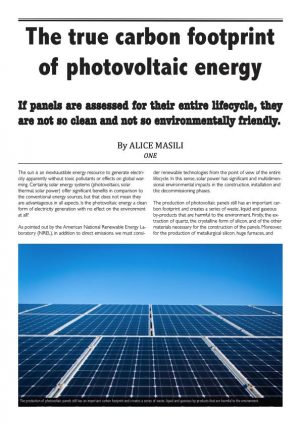The environmental impact of solar panel production the production process of manufacturing solar panels is energy intensive and polluting.
Environmental impact of manufacturing solar panels.
The predominant negative environmental impacts of solar energy come from producing the solar panels.
Approximately 90 of most pv modules are made up of glass.
No solar panels themselves do not contribute to global warming emissions.
Solar panels often contain lead cadmium and other toxic chemicals that cannot be removed without breaking apart the entire panel.
Key negative impacts include land clearance which can destroy habitats and kill vegetation.
An oxidized form of silicon non crystallized silica is the most common component of quartz sand.
The process starts with mining of quartz sand.
There s also the impact of global warming emissions to consider.
You also have to consider water usage which can be a significant impact in locations where water may be scarce.
You should now have a better understanding of the environmental impacts of solar energy.
Solar power is not perfect but overall it provides a positive net environmental impact and financial impact.
However the manufacturing process of transporting installing maintaining decommissioning and dismantling panels all contribute to harmful emissions.
Fabricating the panels requires caustic chemicals such as sodium hydroxide and hydrofluoric acid and the process uses water as well as electricity the production of which emits greenhouse gases.
The potential environmental impacts associated with solar power land use and habitat loss water use and the use of hazardous materials in manufacturing can vary greatly depending on the technology which includes two broad categories.
What can be done to avoid this issue.




























